Contents
Every farmer, whether it is an amateur gardener with a small plot of a few acres or the owner of several hectares of land, strives to make the best possible effort to get a good harvest. Fertilizers, including organic ones, play an important role in this process, since they fertilize the soil first of all, and not the plant itself. The task of organic particles is to saturate the soil with microelements, as well as to improve its structure. “Healthy” soil is the basis for the reproduction of beneficial microorganisms, which, in turn, are the key to proper nutrition of the plant during the growing season.
Advantages and disadvantages of organic fertilizers
Fertilizers with an organic structure can improve soil quality by accumulating structureless granules into small lumps, creating free space between them. With such a structure, the soil has a greater ability to pass air and water, retain heat and nutrients for a longer time. The work of organics is slow and safe, which allows you not to worry about the fact that the plant is “overfeeding” or “burning”. If we talk about attitudes towards the environment, then organics pollute underground sources less than mineral agrochemicals. Why is it so convenient to use organic fertilizers:
- the introduction of this type of fertilizer contributes to an increase in humus in the composition of the soil;
- looseness of the soil provides better “breathing” and nutrition;
- organic matter promotes the activation of beneficial microorganisms;
- even the “richest” mineral substance cannot compete with organic fertilizers in terms of macro- and microelements.
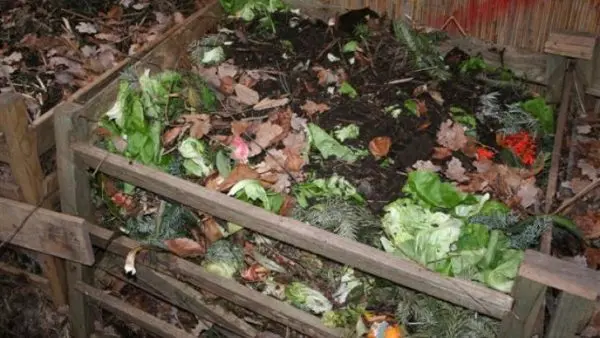
Disadvantages of organic fertilizers:
- The danger of using not quite ready-made substance. In this case, we are talking about undecayed manure, which remains “rich” in weed seeds.
- The need for large volumes. Organic fertilizers always need to be applied much more than mineral ones. In addition, after making, mandatory digging is required so that the nitrogen does not have time to evaporate.
- The inability to evaluate nutrients in exact quantities, which is not always convenient in terms of adjusting germination time and crop volumes.
- After the application of organic fertilizers, not all plants are subject to planting at the place of application. For some crops, it will take a year or two for the area to become suitable for growing the crop.
From waste to nutrients
To create organic fertilizer, gardeners use various improvised means:
- manure;
- chicken manure;
- ash;
- sawdust;
- potato peelings.
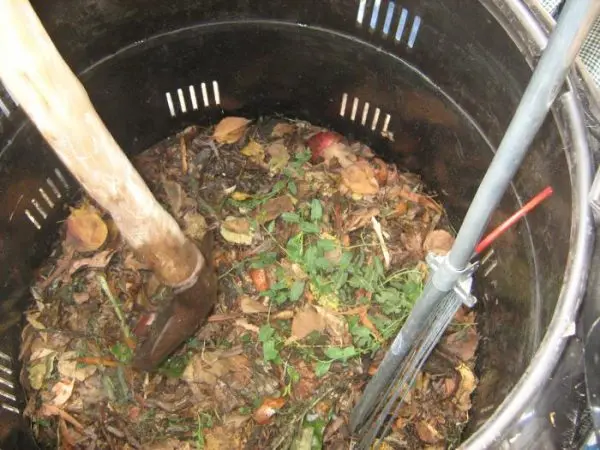
I would like to dwell on the last point in more detail, since such “good” is often enough in every home, so it is important to know how you can convert waste into nutrients. It is not difficult to prepare a useful drug, since during the cold season you can collect enough cleanings to make organic fertilizer out of them with your own hands in the spring.
Video “All about the benefits of potato peeling”
How to apply potato peels and what they are useful for.
What is the use?
Potato peels are a direct source of organic acids, starch, fat, potassium, vitamin C, salt, and glucose. As soon as this entire set enters the soil, the reaction of its enrichment begins. All useful substances from the decomposition of cleanings are absorbed by the root system of the culture. An important plus of the work of such a tandem is the heat that is released during the process of decay of cleanings. It is released in small quantities, but it is quite enough for the full development of the plant.
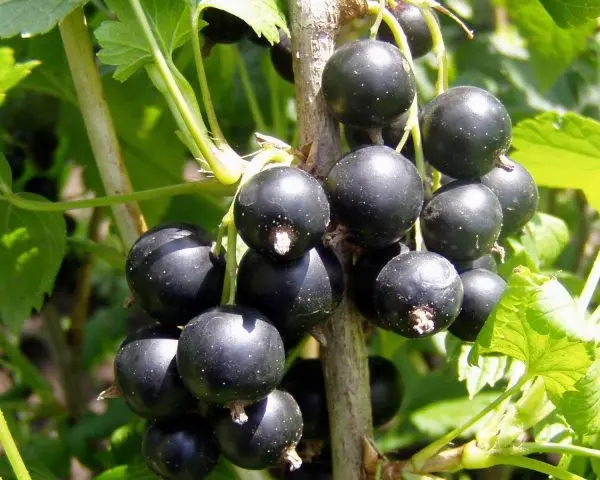
Potato peels can be used not only as fertilizer, but also as bait for garden pests – Colorado beetles and slugs. In order for the bait to work, in the spring the waste is laid out on the surface of the soil. Pests will react to such a “delicacy”, and then your task is reduced only to collecting them and destroying them. An important aspect is the cost of such organic fertilizer. In fact, you only pay for potatoes once, but in the end you get food and natural fertilizer for the same price.
How to prepare fertilizer
There are several ways to prepare organic fertilizer from potato peels yourself:
- make flour;
- prepare a substance like gruel;
- prepare a nourishing infusion.

Perhaps for many, the simplest use for potato peels is to simply sprinkle them in, however, if you take a little time and prepare a full-fledged fertilizer, the likelihood of increasing the yield will be much greater.
Flour from potato peels is prepared in several stages:
- Dry cleaning. For these purposes, it is better to choose a thin peel of potatoes, which is obtained when working with a vegetable peeler. You can dry the material near the heater for 5-6 days. The best effect will be if you use the oven. At a high temperature, cleaning not only dries faster, but also destroys bacteria and fungi that may remain on them.
- Pass dried waste through a meat grinder.
- It is advisable to store the dry substance until spring in cotton bags.

Preparation of gruel from cleanings:
- Dry cleaning on radiators, in a cupboard or in the sun.
- Place them in a barrel and fill with boiling water so that everything is well covered with water. Hot “bath” helps to destroy bacteria and fungi.
- Within 10 days, the slurry is infused and soaked. After it is necessary to mix thoroughly and ceiling. In this form, the gruel is ready for use.
Potato waste tincture can also be used to water plants. The cooking process involves soaking organic matter for a day in hot water.
What plants can be used
Potato peel fertilizer is not suitable for all plants. The most responsive to feeding are:
- cucumbers;
- cabbage;
- pumpkin;
- berries (black and red currants);
- fruit trees;
- houseplants.
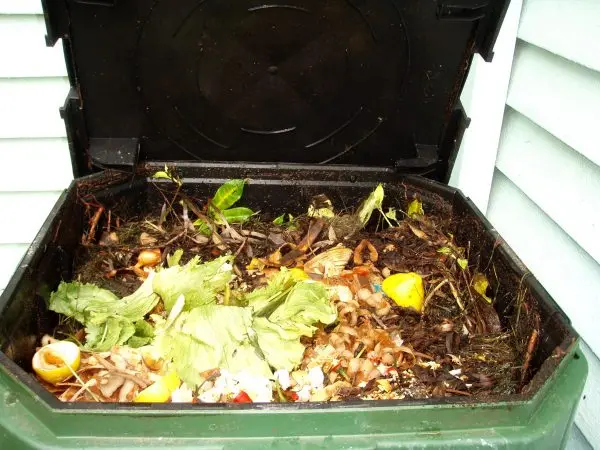
Due to diseases common with potatoes, fertilizer is not suitable for the following crops:
- pepper;
- eggplants;
- tomatoes.
When planting seedlings, it is better to use gruel or flour, which in the amount of one handful must be applied to each hole and sprinkled with soil. Then the layers are repeated again and seedlings are already planted in the hole. A watering can can be watered under the root of the plant. Fruit trees and shrubs are most receptive to organic fertilization in the spring. Therefore, you should simply dig cleaning into the trunk circle. During the summer, they will rot and give glucose and starch by autumn.
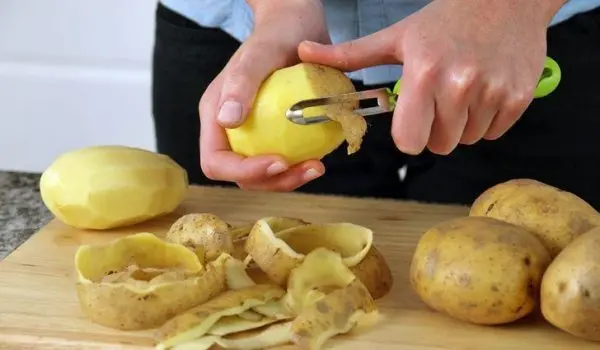
Do you want to save as much as possible and not harm the plants in your summer cottage? Then collect potato peels and prepare organic fertilizer with your own hands. After all, with the help of it you will not only enrich the soil with useful substances, but also help protect future crops from various pests.
Video “Using potato trimmings in the garden”
Video instruction on the use of cuttings, as well as how to use potato peel when planting currants.









